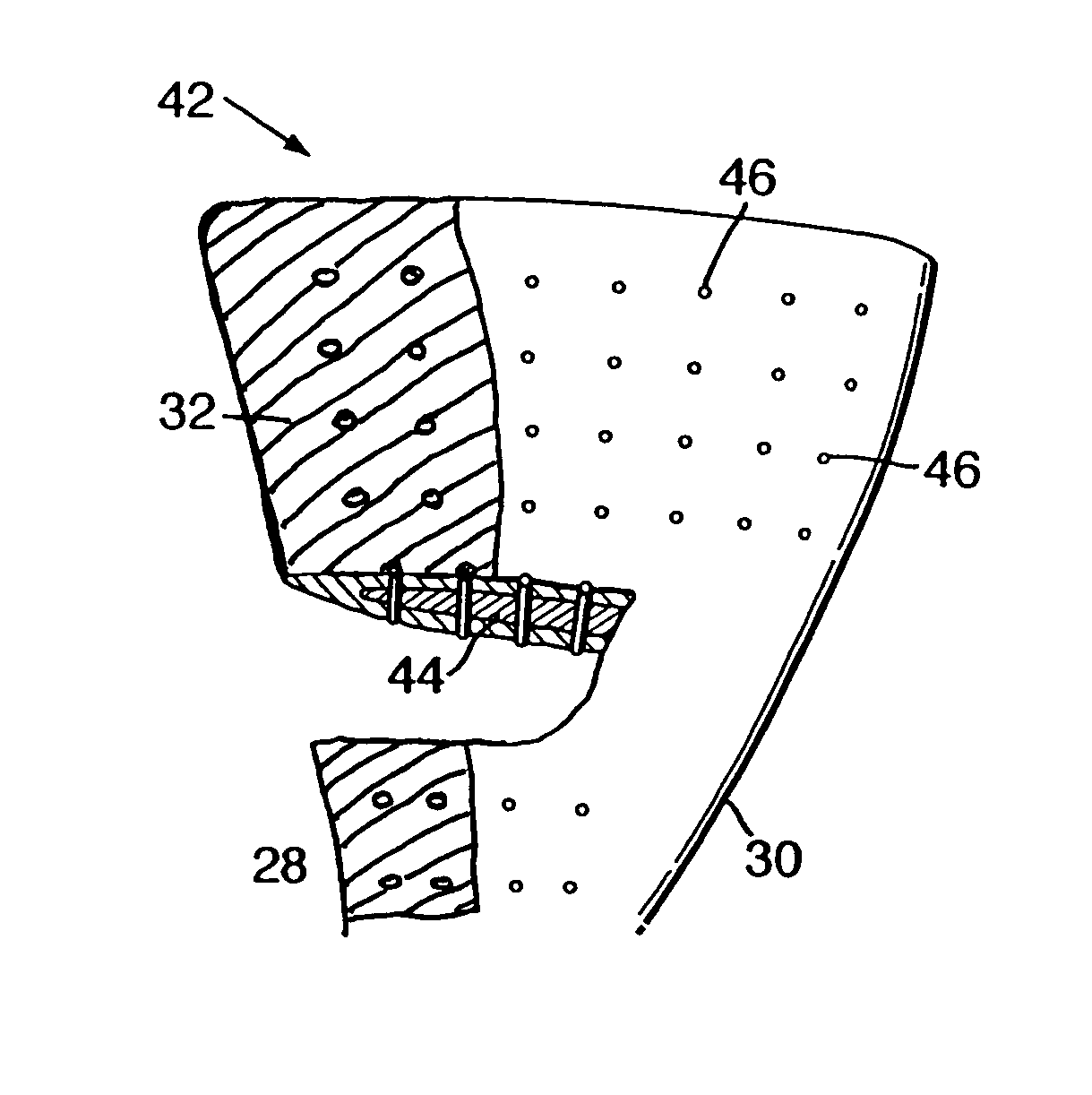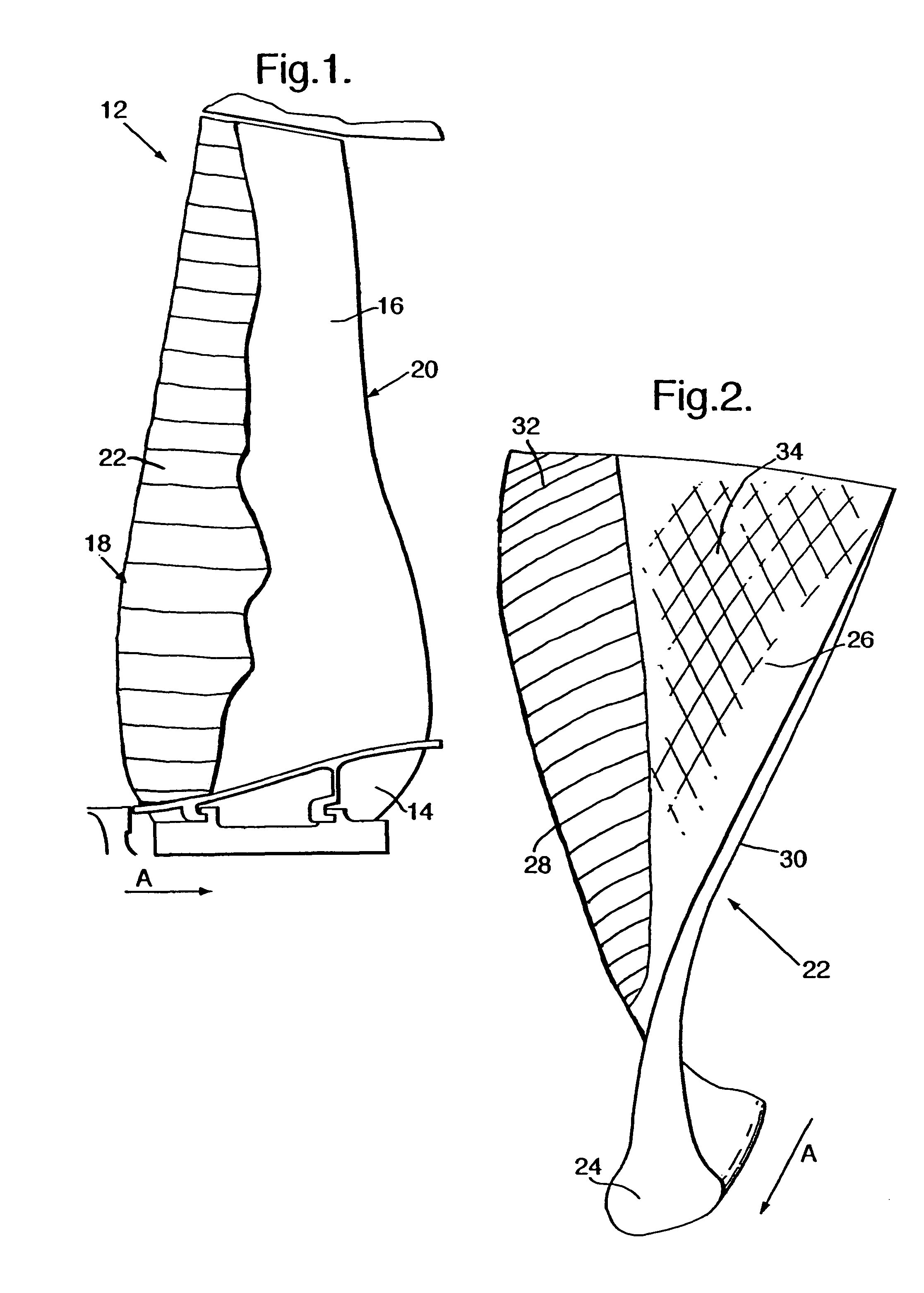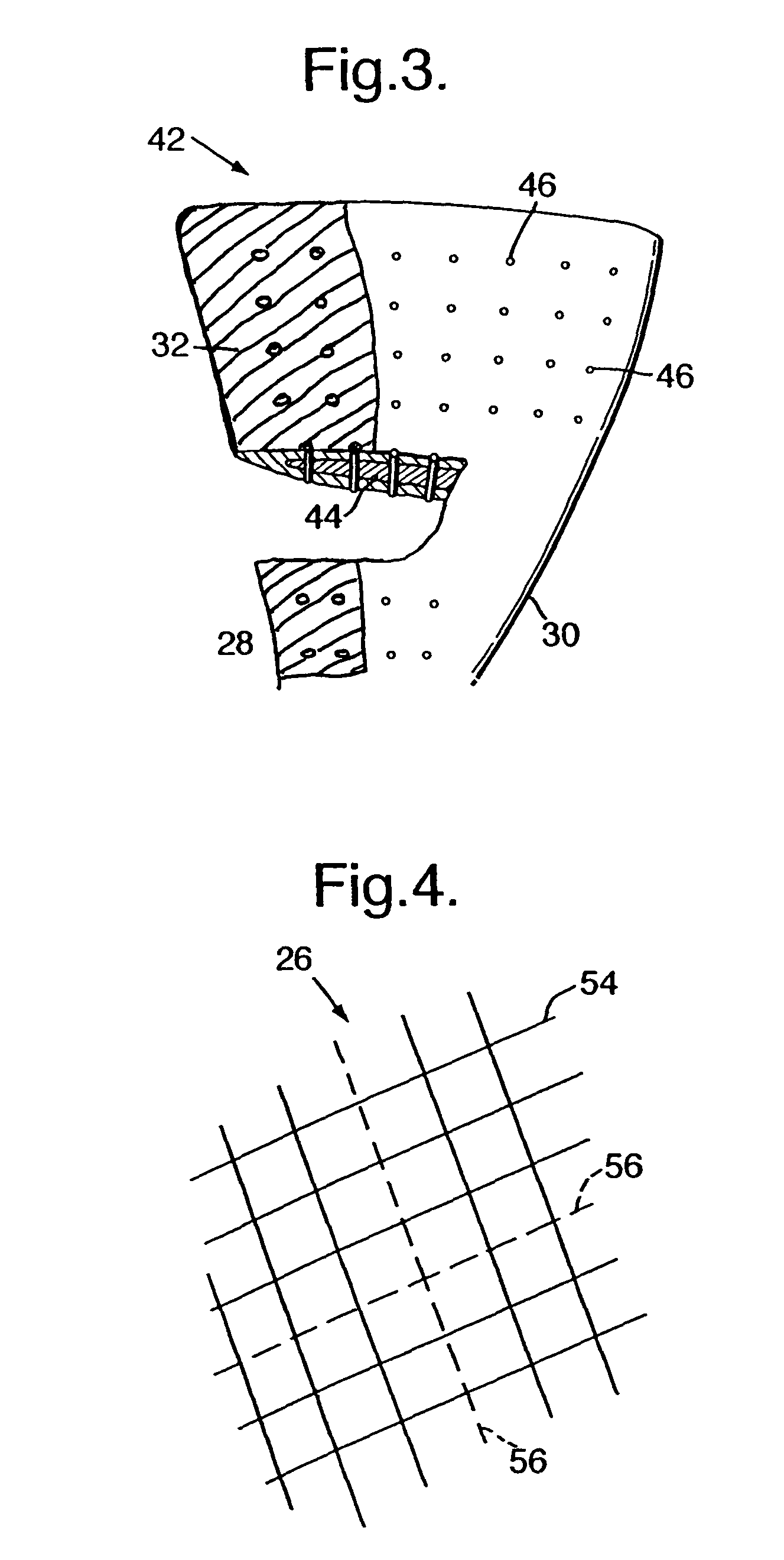Apparatus for preventing ice accretion
a technology of ice accretion and apparatus, which is applied in the direction of liquid fuel engines, marine propulsion, vessel construction, etc., can solve the problems of reducing lift, increasing drag, affecting the performance of the component, so as to prevent ice accretion
- Summary
- Abstract
- Description
- Claims
- Application Information
AI Technical Summary
Benefits of technology
Problems solved by technology
Method used
Image
Examples
second embodiment
[0023]A second embodiment is shown in FIG. 3. Here, the viscoelastic material, a synthetic mix of epoxy and polyurethane, is provided as a filler 44 for a hollow composite blade 42. Pins 46 of carbon fibre provide a heat conduction path from the viscoelastic filler 44 to the surface of the blade 42, and also add mechanical strength. The number and positions of these pins 46 may be arranged to optimise the heat transfer.
third embodiment
[0024]FIG. 4 shows part of the aerofoil surface of a composite fan blade 22, as shown in FIG. 2. In this third embodiment of the invention, The weave 54 of the outer wrap of the blade 22 includes fibres 56 of a shape memory alloy (SMA).
[0025]A phenomenon known as pseudoelasticity occurs in SMAs when the alloy is completely composed of austenite (i.e. when the temperature is greater than Af, the temperature at which the austenite phase finishes forming). As an increasing force is applied to the SMA, the austenite becomes transformed into martensite. This transformation occurs without any change in the temperature of the alloy. Once the loading is decreased, the martensite begins to transform back to austenite (because the temperature of the alloy is still above Af) and the SMA returns to its original shape. This reverse transformation releases energy as heat (the energy that was originally put into the alloy by applying a force to it). In the embodiment of FIG. 4, vibrations in the b...
PUM
| Property | Measurement | Unit |
|---|---|---|
| Glass transition temperature | aaaaa | aaaaa |
| Viscoelasticity | aaaaa | aaaaa |
Abstract
Description
Claims
Application Information
 Login to View More
Login to View More - R&D
- Intellectual Property
- Life Sciences
- Materials
- Tech Scout
- Unparalleled Data Quality
- Higher Quality Content
- 60% Fewer Hallucinations
Browse by: Latest US Patents, China's latest patents, Technical Efficacy Thesaurus, Application Domain, Technology Topic, Popular Technical Reports.
© 2025 PatSnap. All rights reserved.Legal|Privacy policy|Modern Slavery Act Transparency Statement|Sitemap|About US| Contact US: help@patsnap.com



